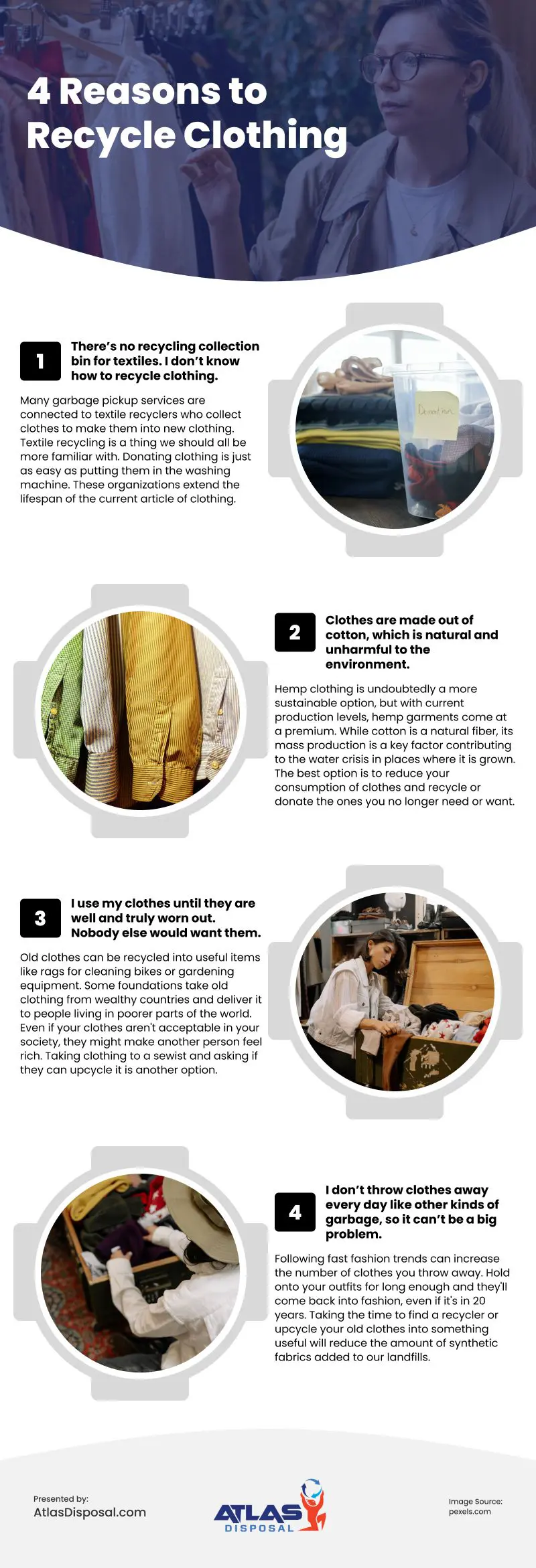
The fashion retail industry substantially contributes to environmental pollution since its annual carbon dioxide output exceeds that of all international airline and maritime shipping combined. Clothing production is among the many businesses polluting our air, water, and land. It also adds to the loss of natural resources as a result of production techniques that are not eco-friendly.
Not only may clothes recycling help reduce the amount of waste in landfills, but it also has a far-reaching positive impact on the natural environment. This not only helps reduce the demand for new materials but also helps reduce the usage of energy and water. Recycling clothes uses roughly 80% less energy and significantly less water than creating a new item from scratch. This is because a lot of the energy used to make clothes comes from collecting, processing, and assembling raw materials. When clothes are recycled, all of these steps are skipped. If we reuse the materials already out there, we can reduce the damage we do to the environment and stop making new dresses. Clothing that has been recycled is often turned into something completely different, like a necklace or a blanket. This prolongs the time frame during which the commodities in concern are kept out of landfills. Recycling also helps reduce air pollution by stopping toxic chemicals from getting into our waterways and environment.
Recycling has many benefits, not the least of which is its positive influence on the natural world. Additionally, clothes recycling may result in cost savings. Recycling worn clothing is an additional technique to conserve natural resources. If we can extend the life of clothing already in circulation, we can save valuable resources that might otherwise be lost to garbage. Pre-consumer textile remnants are generally recycled into new garments and other products. These scraps are generated throughout the production process and discarded before being usable. This prevents textile waste from being dumped in landfills and conserves otherwise wasted resources. By buying used clothes, people can save money on their wardrobes without giving up style or quality. By redistributing gently used clothing, we can help those who may not have the resources or financial means to obtain their brand new clothing. People in need can also get a lot of help by giving their old clothes to thrift stores or clothing drives.
Recycling worn clothing is a simple way for everyone to begin living an environmentally responsible lifestyle. It’s also important to remember that recycling should only be done when needed. Before you throw away a piece of clothing, you should have it fixed first, and when you wash your clothes, you should use products that are good for the environment. Any assistance is much appreciated! Therefore, you should begin recycling your old clothing immediately!
Last but not least, clothes recycling can enhance people’s living conditions in various regions of the world. By giving used clothes a second chance, we can help the economies of developing countries grow and create jobs in those countries. This could help many communities worldwide get the money they need and encourage the textile industry to use more environmentally friendly ways to make things.
Recycling clothing is a necessary endeavor in which all individuals should engage. Not only is it good for the environment, but it also helps people worldwide. If we take these steps now, we can make sure that people in the future will be able to live in a clean world that has healthy ecosystems and economies. Let’s begin reducing our environmental impact by recycling our old clothing immediately.
source: https://atlasdisposal.com/blog/why-recycling-clothing-matters-more-than-you-think/
Comments
Download this infographic.
